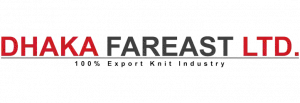High visibility vests are super important for keeping workers safe in different industries. They help prevent accidents by making workers more visible. But, some people worry about how easily these vests can catch fire, especially in places where there’s heat or flames. It’s crucial to find a good balance between being visible and staying safe. To help, we can treat these vests to make them more flame-resistant, do risk assessments, and train workers on staying safe. These steps can lower the risks and make sure everyone stays safe at work.
Understanding High Visibility Vest Materials
High visibility vests are usually made from bright fabrics that stand out during the day and reflective materials that shine light back in the dark. These vests use materials like polyester, nylon, and polyethylene for durability and visibility. While these materials don’t easily catch fire, the stuff added to make them bright and reflective can affect how easily they burn.
Fire Resistance Testing Standards
To check how easy these vests catch fire, there are standards for testing their flammability. In the U.S., the American National Standards Institute (ANSI) sets rules for high visibility clothing, including testing how well they resist flames. The ANSI/ISEA 107-2020 standard lists what high visibility vests need to do to keep workers safe from fire and heat.
Flame Resistance Treatments
Some high visibility vests get treatments to make them safer from fire. These treatments can include adding chemicals that stop flames or using fire-resistant fibers in the vests. Even with these treatments, the vests won’t be completely fireproof. But they can stop fires from spreading and keep the wearer safer.
Limitations of Flame Resistance
Despite treatments, high visibility vests can’t handle direct fire or intense heat like specialized protective gear can. Industries with high risks, like firefighting or welding, need special clothing for better fire protection. High visibility vests aren’t meant to replace these protective clothes and shouldn’t be the only form of safety in dangerous jobs.
Considerations for Workplace Safety
When choosing high visibility vests, employers and workers should think about the dangers at their workplace. If there’s a risk of fire, they might need flame-resistant vests or extra protective gear. Doing a risk assessment can help spot potential hazards and decide on the right safety measures, including picking the right high visibility gear.
Care and Maintenance
Taking care of high visibility vests is key to keeping them safe and working well. Washing them as directed by the manufacturer removes dirt and keeps them visible and flame-resistant. Regular checks for wear and tear are also important. Damaged vests should be replaced quickly to keep workers safe on the job.
Training and Awareness
Training workers on how to use and look after high visibility vests is crucial for their safety. Workers should know about the vests’ limits, especially when it comes to fire risks, and when to wear extra protective gear. Raising awareness about the risks linked to high visibility vests can prevent accidents and injuries at work.
Balancing Visibility and Safety
High visibility vests are vital for worker safety in various industries. They are not fireproof but can resist fires to some extent. Knowing their limits and choosing the right protective gear is crucial. Employers and workers should consider these seven flammability points. This ensures smart decisions when using the vests at work.

